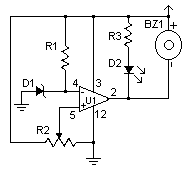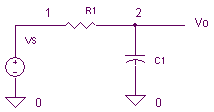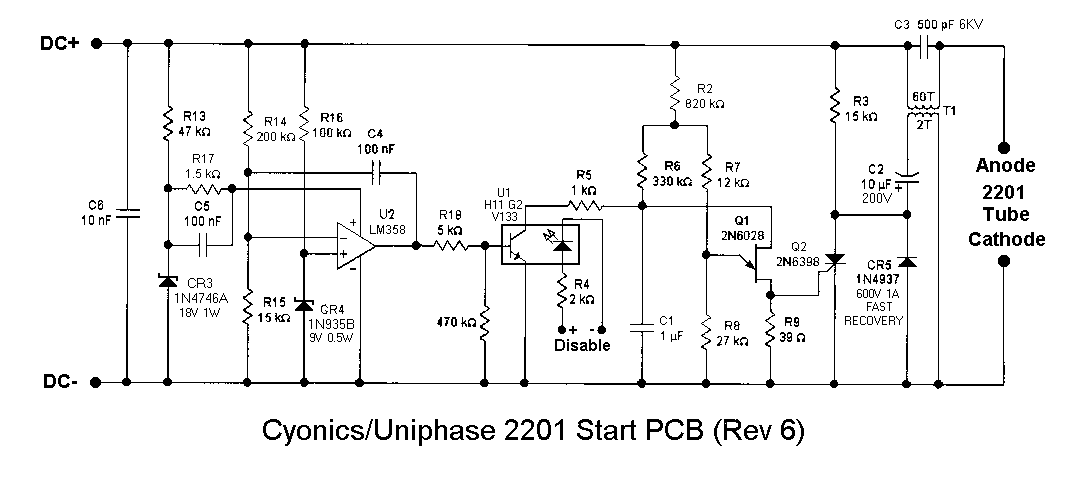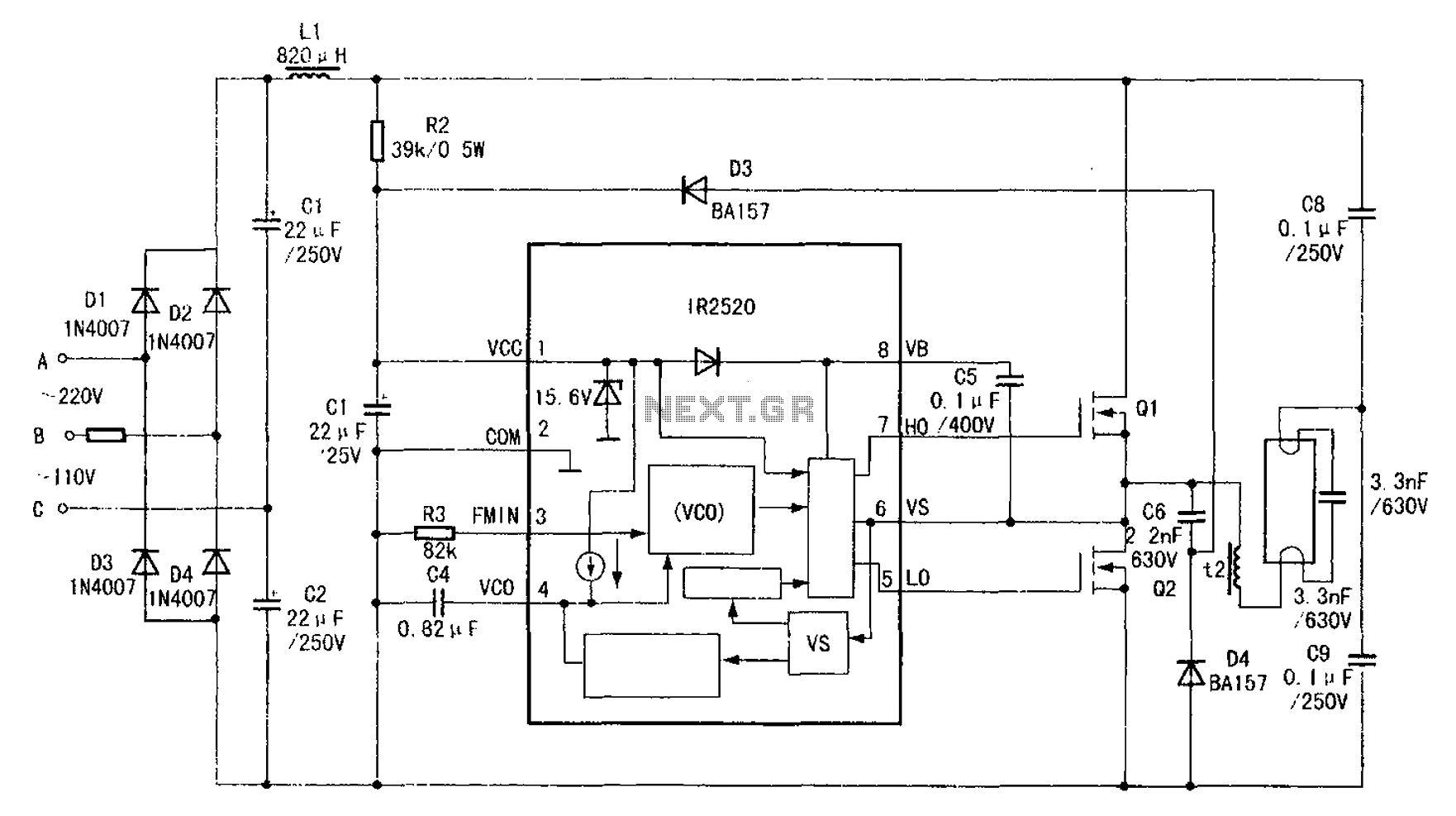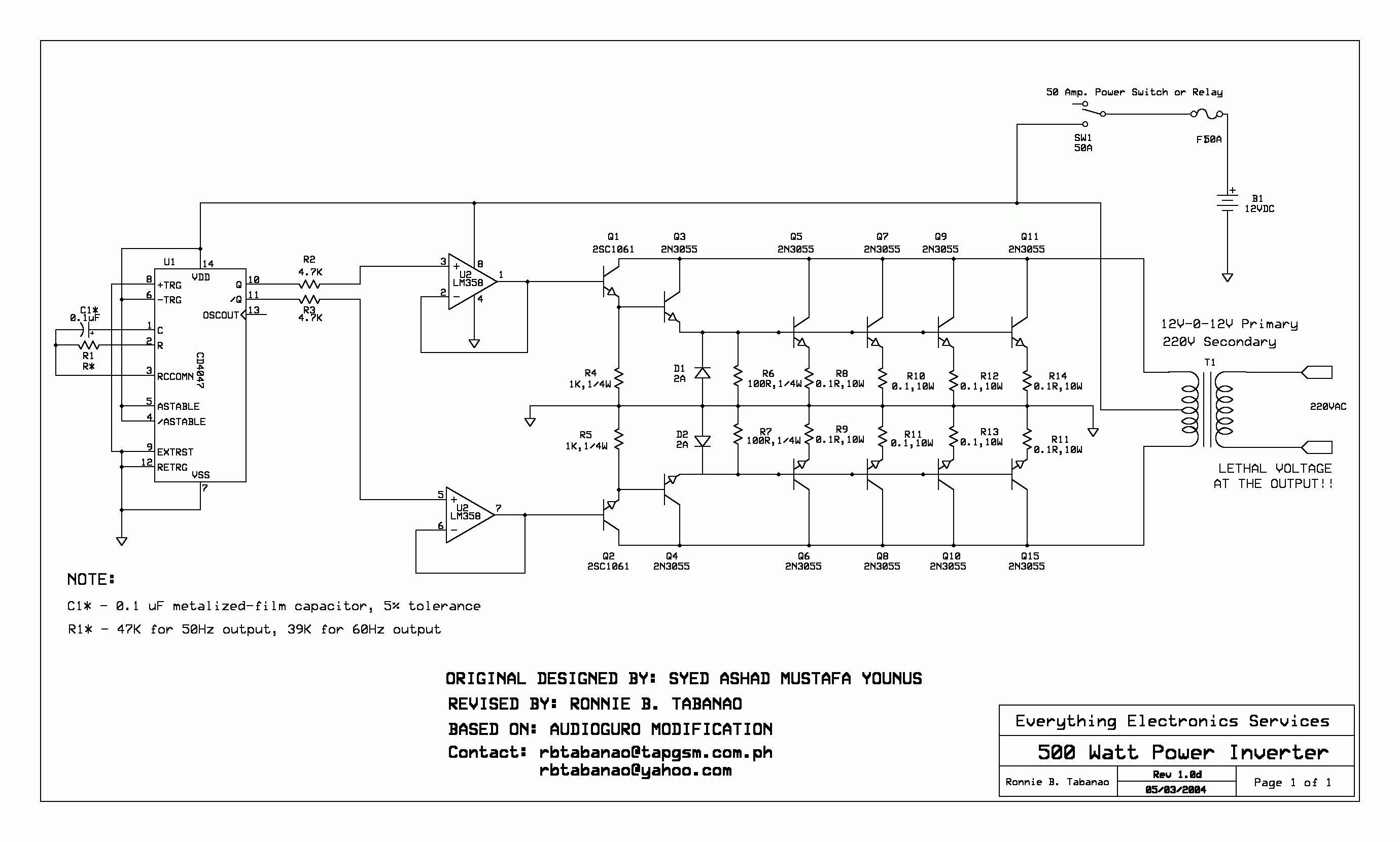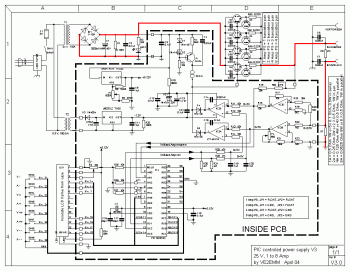
low power switching regulator
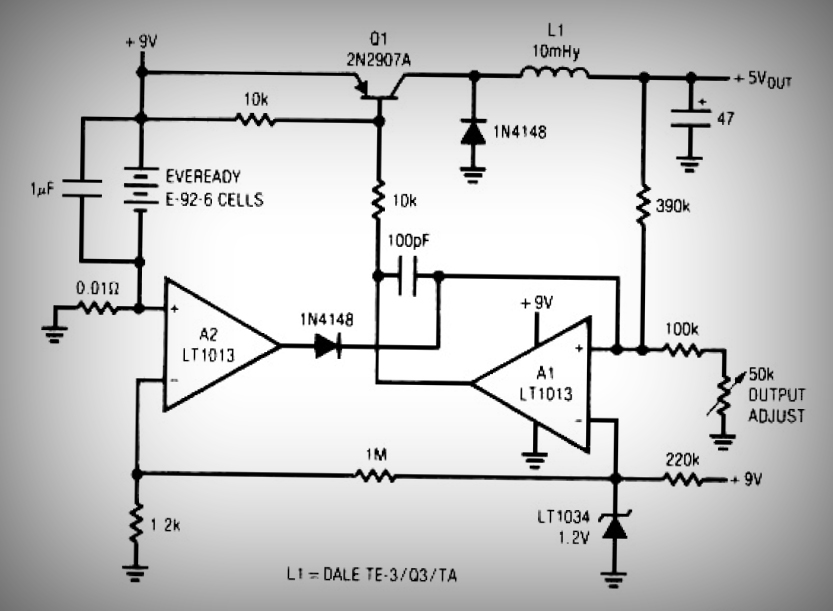
This circuit is a simple battery-powered switching regulator that provides a 5V output from a 9V source with 80% efficiency and a 50 mA output capability. When Q1 is on, its collector voltage increases, causing current to flow through the inductor. The output voltage rises, leading to an increase in the output of A1. When the output voltage reaches a certain level, Q1 turns off, resulting in the output dropping low enough for A1 to reactivate Q1. The 1 µF capacitor ensures low battery impedance at high frequencies, preventing voltage sag during switching.
The described circuit functions as a step-down (buck) converter, converting a higher voltage (9V) to a lower regulated output voltage (5V). The key components include a transistor (Q1), which acts as a switch, an inductor, a feedback operational amplifier (A1), and a capacitor for filtering.
In the operational phase, when Q1 is activated, current flows through the inductor, storing energy in its magnetic field. The feedback mechanism involving A1 monitors the output voltage. As the output voltage approaches the desired level, A1 adjusts the base drive of Q1 to maintain regulation. When the output voltage exceeds the set point, A1 reduces the drive to Q1, causing it to turn off and subsequently allowing the inductor to discharge through the output load, thereby providing continuous power.
The inclusion of the 1 µF capacitor plays a crucial role in maintaining stability and performance by providing a low-impedance path for high-frequency components of the load current. This capacitor helps to mitigate voltage dips during rapid load changes or switching events, ensuring that the output voltage remains stable and within specified limits.
Overall, this circuit exemplifies a compact and efficient solution for voltage regulation in battery-operated devices, achieving a balance between power efficiency and output stability. The design can be further enhanced by selecting components with appropriate ratings and characteristics to optimize performance for specific applications.This circuit is a simple battery-powered switching regulator provides 5V out from a 9V source with 80% efficiency and 50-mA output capability. When Q1 is oon, its collector voltage rises, forcing current trhough the iinductor. The output voltage rises, causing A1`s output to rise. Q1 cutts off and the output drops low enough for A1 to turn Q1. The 1 uF capacitor ensures low battery impedance at high frequencies, preventing sag during switching. See schematic diagram below : 🔗 External reference
The described circuit functions as a step-down (buck) converter, converting a higher voltage (9V) to a lower regulated output voltage (5V). The key components include a transistor (Q1), which acts as a switch, an inductor, a feedback operational amplifier (A1), and a capacitor for filtering.
In the operational phase, when Q1 is activated, current flows through the inductor, storing energy in its magnetic field. The feedback mechanism involving A1 monitors the output voltage. As the output voltage approaches the desired level, A1 adjusts the base drive of Q1 to maintain regulation. When the output voltage exceeds the set point, A1 reduces the drive to Q1, causing it to turn off and subsequently allowing the inductor to discharge through the output load, thereby providing continuous power.
The inclusion of the 1 µF capacitor plays a crucial role in maintaining stability and performance by providing a low-impedance path for high-frequency components of the load current. This capacitor helps to mitigate voltage dips during rapid load changes or switching events, ensuring that the output voltage remains stable and within specified limits.
Overall, this circuit exemplifies a compact and efficient solution for voltage regulation in battery-operated devices, achieving a balance between power efficiency and output stability. The design can be further enhanced by selecting components with appropriate ratings and characteristics to optimize performance for specific applications.This circuit is a simple battery-powered switching regulator provides 5V out from a 9V source with 80% efficiency and 50-mA output capability. When Q1 is oon, its collector voltage rises, forcing current trhough the iinductor. The output voltage rises, causing A1`s output to rise. Q1 cutts off and the output drops low enough for A1 to turn Q1. The 1 uF capacitor ensures low battery impedance at high frequencies, preventing sag during switching. See schematic diagram below : 🔗 External reference
